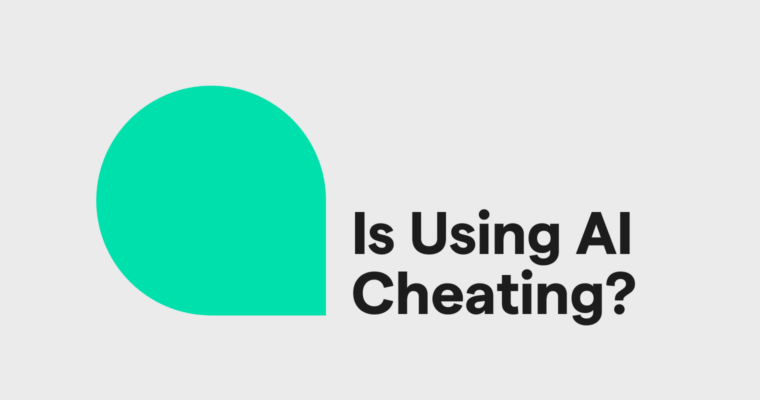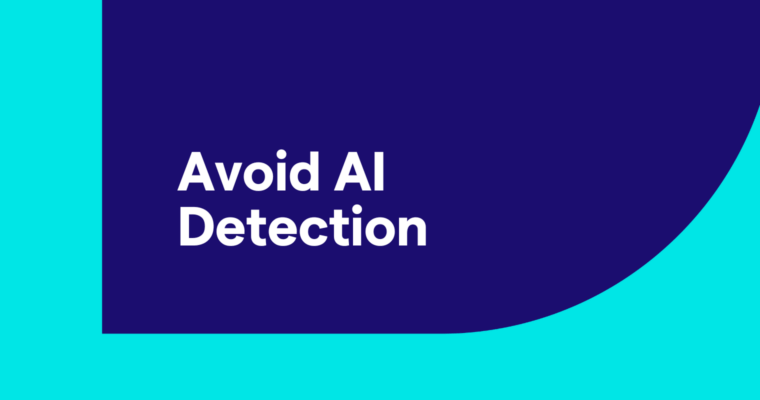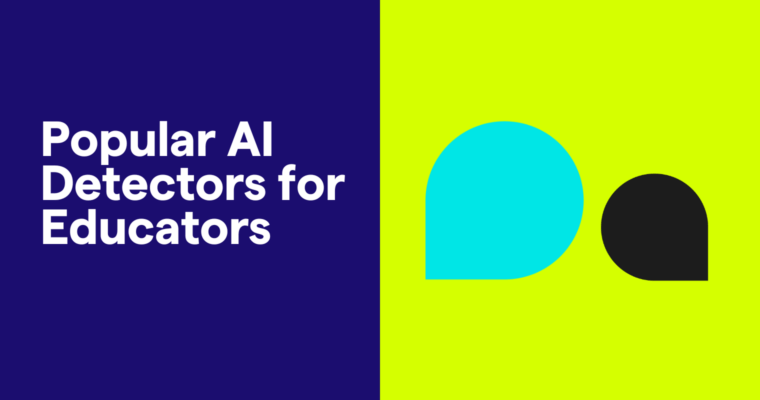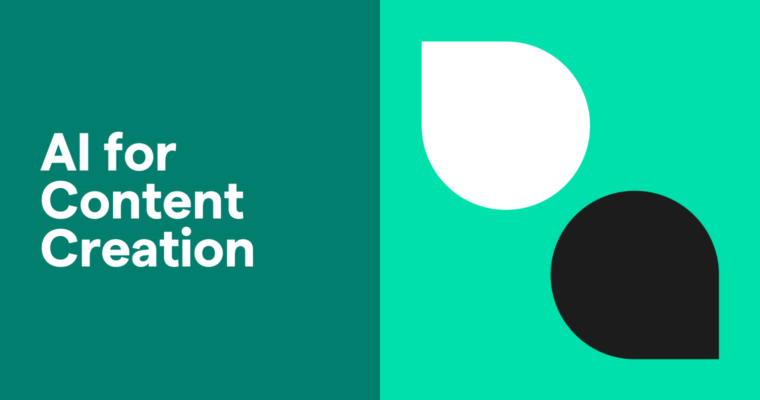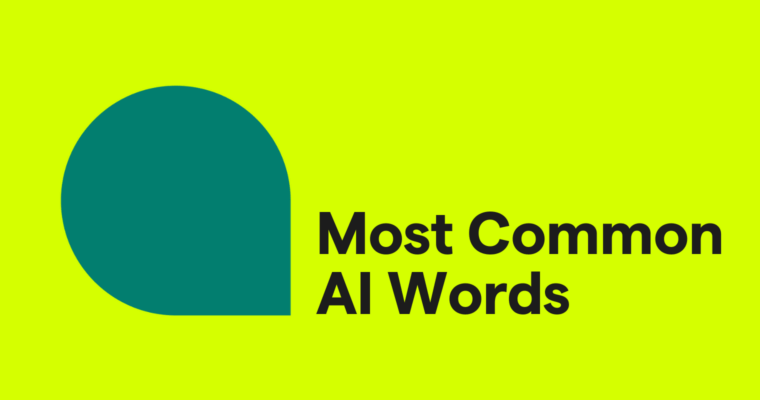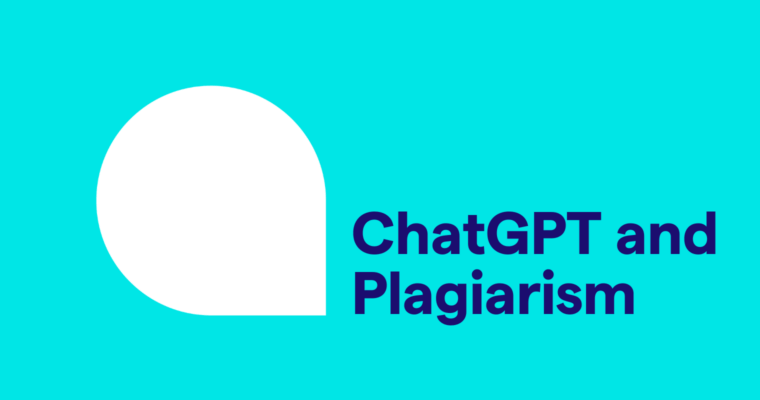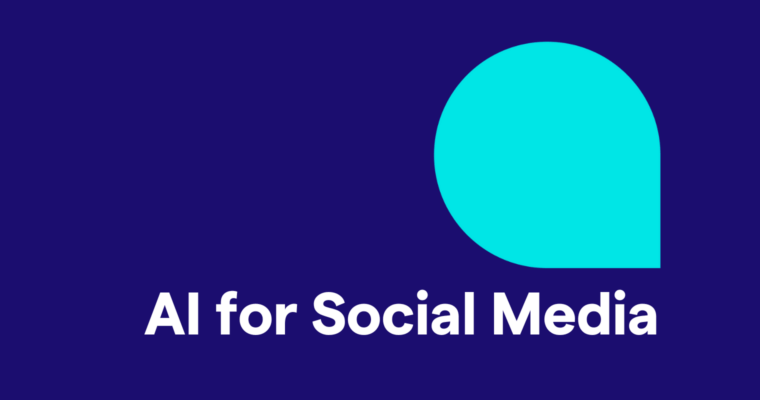
Social media moves fast, and so do the demands on the people managing it. From developing fresh content daily to responding to followers, analyzing performance, and optimizing paid campaigns, staying on top of social media as a marketer can be overwhelming. That’s where artificial intelligence (AI) comes in.
AI isn’t here to replace your creativity; it’s here to help you work smarter. By automating repetitive tasks, uncovering insights from data, and speeding up content creation, AI can help you save time and engage your audience more effectively.
In this guide, you’ll learn how to use AI for social media in practical, strategic ways, from content generation and audience interaction to influencer marketing, analytics, and more.
Table of Contents
What is AI for social media marketing?
How can AI be used for social media?
AI for social media content creation
AI for engagement and audience interaction
AI for social media scheduling and automation
AI for social media advertising and targeting
AI for influencer marketing and brand partnerships
AI-powered analytics and performance tracking
Best AI tools for social media
Limitations of AI for social media marketing
What is AI for social media marketing?
AI for social media marketing refers to the use of AI tools and technologies to support, streamline, and enhance how you plan, create, publish, and analyze content across social platforms.
While many people think of AI in social media as just a way to generate posts or images, its capabilities go far beyond content creation. AI can analyze large volumes of data, identify trends, and help you make more informed decisions about your strategy. It’s used for audience targeting, performance optimization, engagement insights, content scheduling, and ad management, essentially helping you work smarter across your entire social media presence.
How can AI be used for social media?
AI is a versatile tool, and its applications in social media can span both creative and operational tasks. To make it easier to understand how AI fits into your strategy, we’ve grouped its key use cases into five categories.
- AI-powered content creation: Generating and optimizing text, images, and video for social platforms
- Engagement and audience interaction: Managing replies, personalizing interactions, and analyzing sentiment
- Advertising and targeting: Improving ad performance with better targeting, copy suggestions, and budget recommendations
- Influencer marketing and brand partnerships: Identifying influencers, analyzing reach, and matching with the right audiences
- Analytics and performance tracking: Interpreting data, generating reports, and offering strategic recommendations
We’ll explore each of these areas in the sections below, along with practical tips and tools to help you integrate AI more effectively into your social media marketing.
AI for social media content creation
AI is a valuable tool for creating social media content, whether you’re writing posts, crafting video scripts, or designing visuals. It supports both the creative and strategic sides of content creation, helping you generate ideas, save time, and optimize performance.
Text-based content
AI tools can support nearly every part of the writing process on social media, from idea generation to final polish. Whether you’re working on an Instagram caption or a longer-form LinkedIn post, AI can help you:
- Brainstorm content ideas based on trending topics or campaign themes
- Draft posts based on a prompt or campaign brief
- Refine tone and style to match your brand or audience (e.g., more casual, professional, or persuasive)
- Rewrite or shorten copy to fit character limits or platform norms
- Suggest hashtags based on topic and audience relevance
- Localize or adapt messaging for different regions or audience segments
- Repurpose content, like turning a blog post into a caption or breaking down a webinar into social snippets
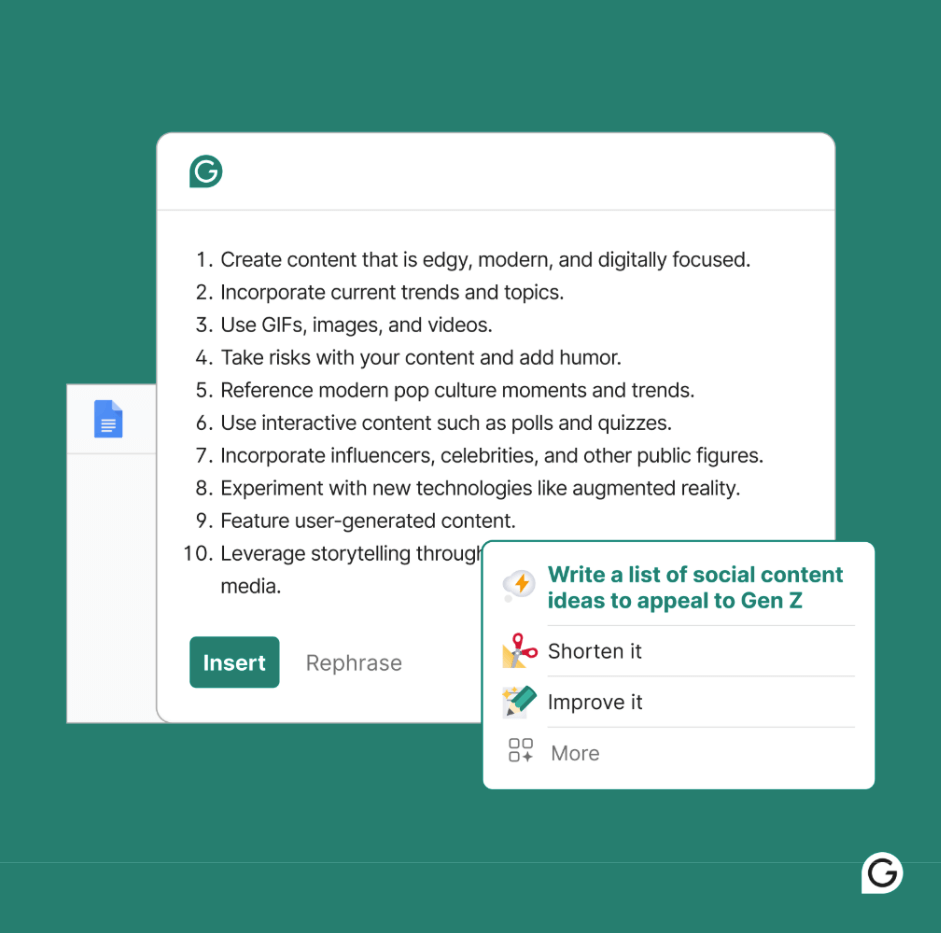
Visual content (images and video)
AI can also help you create compelling visuals, from auto-generated images to short-form videos. This is especially useful for brands that need frequent content but don’t have access to a full creative team.
However, generative visuals come with limitations. AI-generated images may struggle with fine details like hands or text overlays, and video content can be unpredictable or hard to edit. That’s why many marketers use AI visuals for simpler, high-volume content while reserving complex tasks for traditional production.
AI for engagement and audience interaction
AI doesn’t just help you create content—it also helps you understand how your audience is responding to it. Through social listening, sentiment analysis, and scalable personalization, AI gives you the insights and tools to build stronger, more engaging relationships with your audience.
Social listening and strategy insights
AI-powered social listening tools scan platforms for relevant conversations, mentions, and trends. They can help identify which types of posts perform best with your audience and surface patterns in engagement, giving you a clearer view of what resonates and what doesn’t. These insights take the guesswork out of your content strategy and help you post with purpose.
Sentiment analysis
Beyond likes and comments, AI can analyze how people feel about your brand. Sentiment analysis tools interpret tone and emotion in user-generated content, offering a snapshot of your brand reputation across platforms. If sentiment is negative, AI can help pinpoint the issues, whether it’s a product complaint, off-message content, or a crisis bubbling up.
Scalable personalization
AI also makes it easier to personalize your content at scale. By streamlining the content creation process, you can tailor posts to different segments of your audience without starting from scratch each time. For example, if you sell pet products, AI can help you quickly generate targeted posts for both cat lovers and dog lovers, doubling your reach with minimal extra effort.
AI for social media scheduling and automation
Keeping up with a consistent posting schedule can be a major challenge, especially when you’re managing multiple platforms. AI can help by automating some of the most time-consuming parts of content management.
AI-powered scheduling tools can recommend the best times to post based on your audience’s activity patterns, automatically queue up content across channels, and even repurpose posts to fit different platforms. This ensures your content goes out when it’s most likely to get noticed without requiring you to manually hit “publish” every time.
Some platforms also use AI to fill in gaps in your content calendar, suggest post variations, or adapt your messaging for different formats like reels or carousels. For smaller teams, these features can significantly reduce workload and free up time for higher-level strategy.
AI for social media advertising and targeting
AI can take a lot of the pressure off managing paid social campaigns. It’s not just about creating ad copy or visuals (though it helps with that too)—AI also supports better targeting, easier testing, and more efficient budget use.
You can use AI to quickly generate ad content like captions, headlines, or short video scripts, making it easier to experiment with different formats. Behind the scenes, AI tools like AdCreative.ai can analyze data to group your audience by behaviors or interests so your ads reach the right people with the right message.
Once your ads are running, AI can even monitor performance and recommend tweaks, like shifting budget to top-performing ads. Many platforms, like Google Ads and Meta Ads Manager, have built-in AI that automates tasks like bidding and budget allocation so you can focus on strategy instead of micromanaging the details.
AI for influencer marketing and brand partnerships
Finding the right influencer can make or break a campaign, and AI can help you choose with confidence. AI tools like HypeAuditor can analyze audience data to recommend influencers, affiliates, or brand partners that align with your goals and resonate with your target audience.
AI can also help spot red flags before you commit to a partnership. These tools are built to detect signs of fraudulent activity, such as:
- Fake followers (bot accounts)
- Automated engagement (likes, comments, shares)
- Undisclosed paid promotions
AI can also support content creation for influencer campaigns, helping draft messaging guidelines, generate creative briefs, or suggest post formats that align with campaign goals.
After a partnership is in place, AI can continue to monitor performance, tracking engagement, reach, and conversions to help you decide whether to invest further or explore other options.
AI-powered analytics and performance tracking
Analytics have always been part of social media marketing, but AI takes them further by making insights more accurate, accessible, and actionable.
AI tools can process large volumes of social media data in real time, delivering up-to-date performance metrics across platforms. Features like automated reporting and data visualization make it easier to understand what’s working and where to improve—no spreadsheets required.
Beyond tracking past performance, AI can also help you plan ahead. Predictive analytics can highlight trending topics, hashtags, or content formats before they peak so you can stay ahead of the curve. If your current strategy isn’t landing, AI can flag patterns and suggest adjustments before they impact results.
And it’s not just about saving time—AI can help you make better decisions. Whether you’re aiming to boost engagement, refine ad targeting, or improve your content mix, AI can help you prioritize what’s working and pivot when needed. By translating raw data into clear, actionable insights, these tools support stronger outcomes and more impactful campaigns.
Best AI tools for social media marketing
For social media content creation: Grammarly
Grammarly is a powerful AI writing assistant that helps you produce social content that’s clear, engaging, and on-brand. Whether you’re stuck at the starting line or fine-tuning the final draft, Grammarly speeds up the process and removes friction along the way.
Here are just a few things Grammarly can help you do:
- Draft social posts from a simple prompt
- Tailor tone to fit your audience—casual, playful, professional, and more
- Tighten copy to meet character limits or platform best practices
- Brainstorm post ideas or headline variations
- Maintain a consistent brand voice across all content
- Catch grammar, clarity, and style issues before publishing
For social listening and audience insights: Hootsuite
Hootsuite offers robust social listening tools that allow you to monitor brand mentions, track trends, and analyze audience sentiment across multiple social media platforms. These features help you stay informed about conversations relevant to your brand and industry, enabling more effective engagement and strategic decision-making.
For ad design and optimization: AdCreative.ai
If you’re running paid campaigns, AdCreative.ai helps generate high-performing ad visuals and copy based on your brand guidelines and target audience. It’s especially useful for quickly testing multiple variations and identifying what works best—without relying on a full design team.
Limitations of AI for social media marketing
AI is a powerful tool, but it’s not perfect. Here are some key limitations to keep in mind when using AI for social media:
- It can get facts wrong. AI tools may generate inaccurate or outdated information, known as AI hallucinations. Always fact-check any claims before publishing.
- It can unintentionally plagiarize. AI may reuse phrasing or ideas from its training data without proper attribution. Run content through Grammarly’s plagiarism checker to catch issues early.
- It lacks context and nuance. AI struggles with tone and cultural sensitivity. Human review is essential to make sure your content resonates with your audience.
- It doesn’t understand ethics or platform norms. AI won’t always recognize what’s appropriate or compliant with platform guidelines, disclosure rules, or advertising policies. Always review AI-generated content before posting—especially sponsored or sensitive content—and stay up to date on the rules for each platform to ensure you’re not violating terms of service.
- It still needs human oversight. AI can speed things up, but it can’t replace your strategic thinking, creative judgment, or deep understanding of your audience. Always take time to review, refine, and add your own perspective—especially when it comes to tone, timing, and messaging—to ensure your content feels personal, relevant, and aligned with your goals.
The takeaway? Use AI as a support tool, not a shortcut. The best results come from combining AI’s efficiency with your creativity, judgment, and expertise.
AI for social media: Closing thoughts
AI is reshaping how social media gets done, from content creation and audience engagement to advertising, analytics, and beyond. Whether you’re a solo marketer or running social for a growing brand, AI can help you save time, work more strategically, and uncover insights you might otherwise miss.
But AI isn’t a one-click solution. Its real value comes when you use it thoughtfully, pairing its speed and automation with your creativity, experience, and judgment. The most effective social media strategies will always be the ones that blend technology with a human touch.
As AI continues to evolve, so will the ways you can use it. Stay curious, keep experimenting, and remember: The goal isn’t to replace your voice—it’s to amplify it.
Ready to bring AI into your social media strategy? Sign up for Grammarly to generate content, improve clarity, and keep your voice consistent across every platform.
AI for social media FAQs
How is AI used in social media?
AI helps take the guesswork out of social media by streamlining tasks and surfacing valuable insights. It can schedule posts for optimal times, suggest content ideas based on trends, personalize interactions with followers, and analyze engagement patterns to show what’s working and what’s not.
While AI is great for automating repetitive tasks and supporting data-driven decisions, it’s not a substitute for human creativity. Real-time engagement, storytelling, and authentic brand voice still rely on your input to truly connect with your audience.
What is the best AI tool for social media?
The best AI tool for social media depends on what you need help with. If you’re focused on writing posts, captions, or hashtags, Grammarly is ideal for generating drafts, refining tone, and keeping your brand voice consistent. For social listening and audience insights, Hootsuite offers tools to help you track conversations, monitor sentiment, and stay ahead of trends. And if you’re running paid campaigns, AdCreative.ai can help you quickly generate high-performing ad visuals and copy—perfect for testing and scaling your ads more efficiently.
Is there an AI tool to create social media posts?
Yes, several AI tools can help you create social media posts, but the right one depends on what kind of content you’re creating. If you’re looking to generate well-written, engaging text posts, Grammarly is a great option. You can give it a simple prompt, like a topic or campaign goal, and it will generate a draft you can refine and personalize. It also helps with tone, clarity, and consistency so your content resonates with your audience and stays true to your brand voice.
Other tools may support different parts of the process, like designing visuals or optimizing ad copy, but for written social content, Grammarly is a reliable and easy-to-use choice.
Will AI replace social media managers?
AI can automate scheduling, analyze engagement metrics, and generate content suggestions, but it can’t match the creativity, strategy, and critical thinking of social media managers. Building relationships with an audience, responding with empathy, and crafting compelling narratives are tasks that require a human touch. The best approach is to use AI to handle repetitive tasks while allowing social media managers to focus on strategy, brand voice, and authentic engagement.

